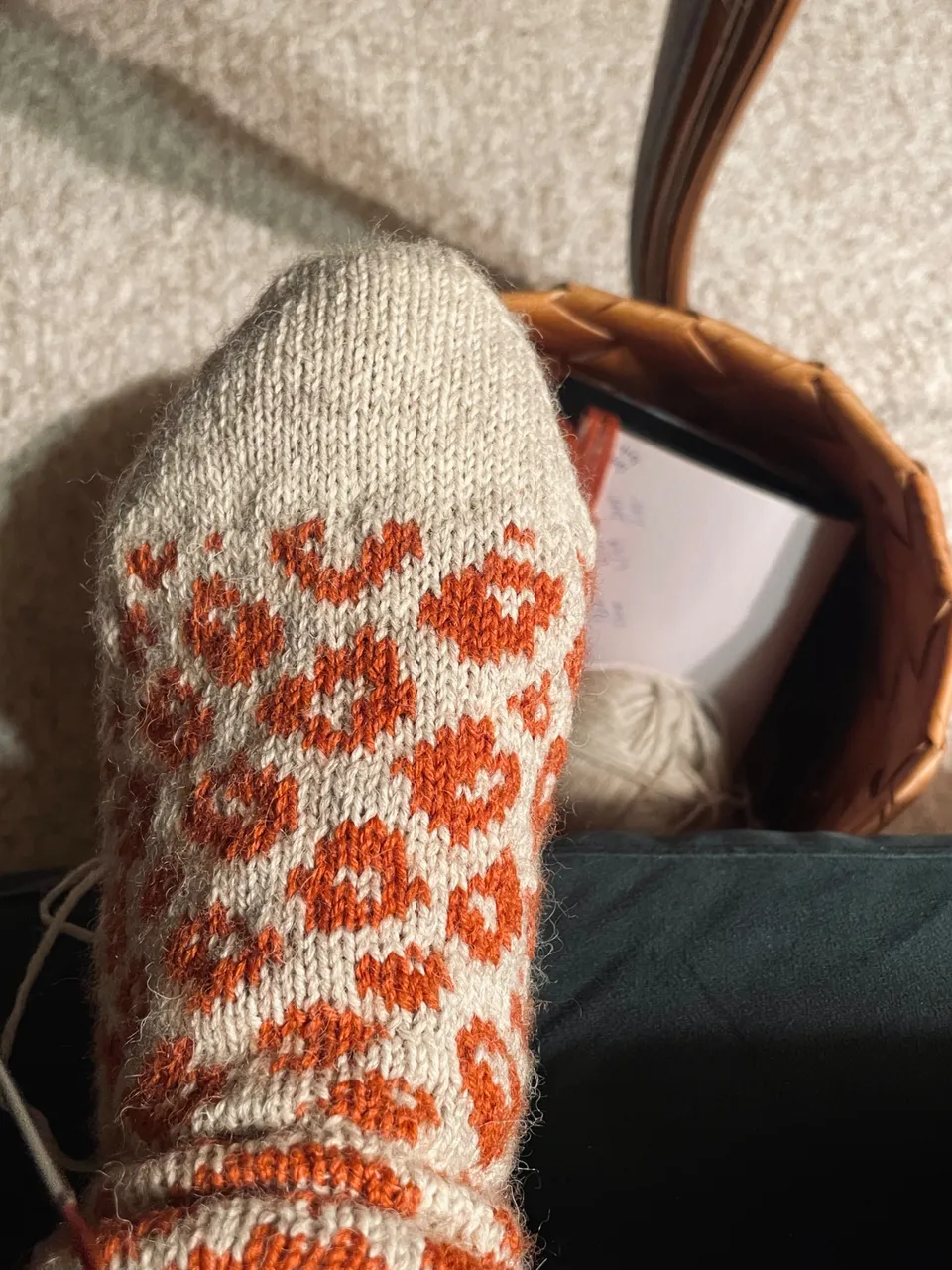
A confession: I have knitted hundreds of socks in my lifetime and they have ALL essentially had the same construction; top down and a flap and gusset heel. It was high time I learn other ways.
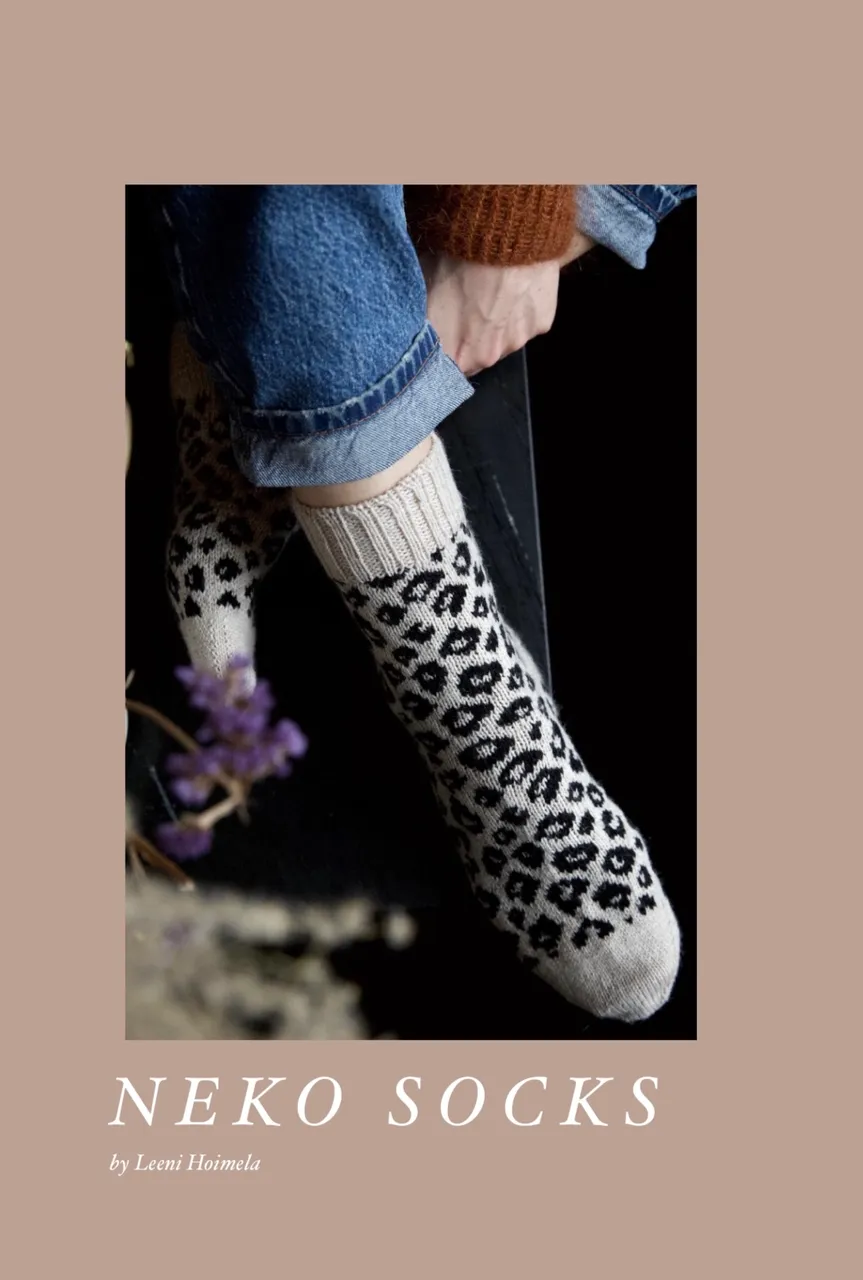
I saw these socks about a year ago and really wanted the pattern for them but it was only released in a book and I didn’t want to buy the whole thing. Out of the blue a few weeks ago I saw that the pattern creator had put up the sock pattern on Raverly in English so I bought it real quickly.
I know I can learn any technique in knitting so I didn’t even look what the construction was. As I started reading it I knew I’d be learning some new things which is quite exciting.
First; a Turkish cast-on, easy and very nice looking. Why haven’t I known about this before!? Well maybe because I never knit socks toe-up…
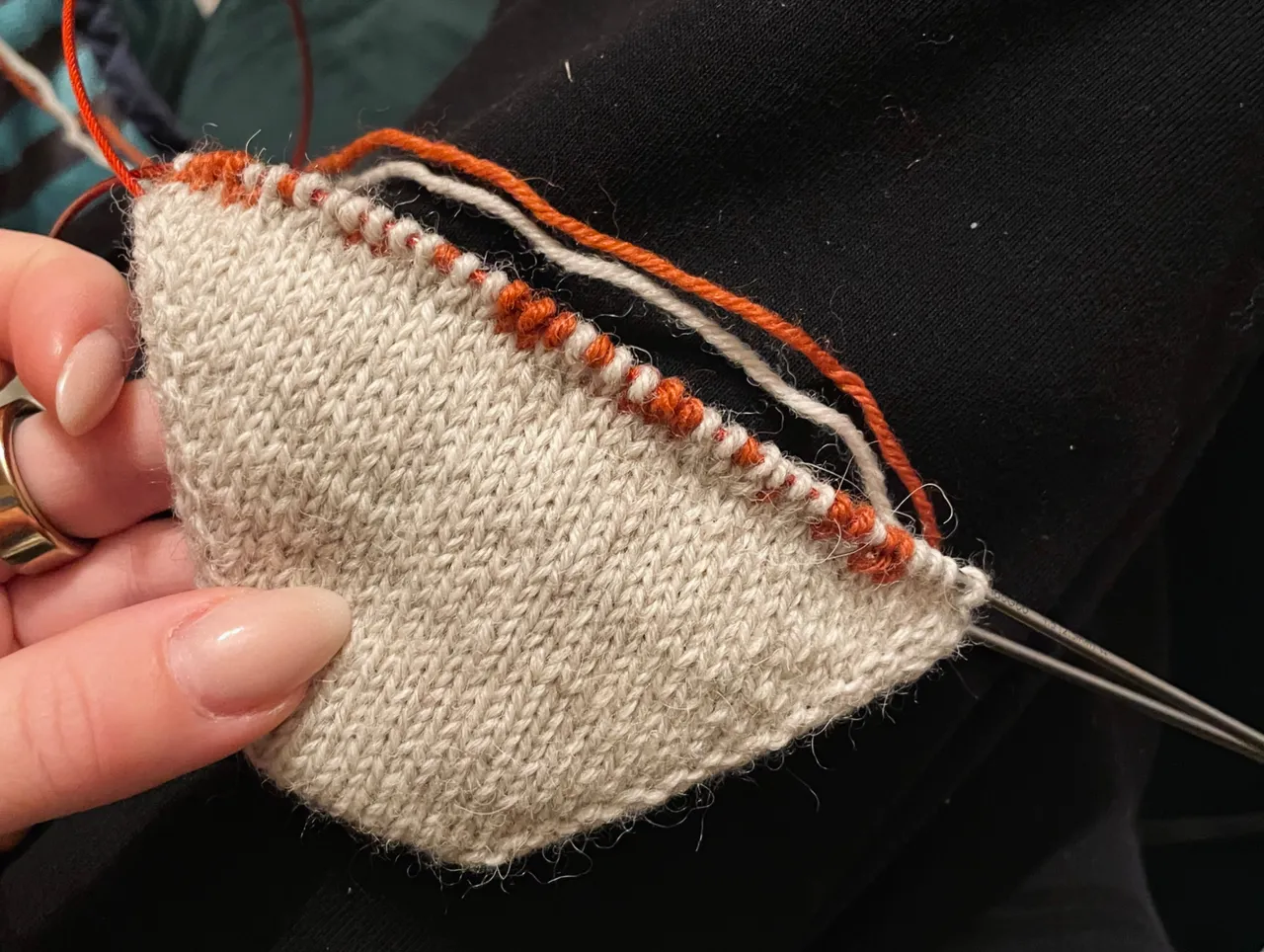
Next up was to choose if I want to do the colour pattern as normal ans just wrap the yarns when there are longer stretches of the other colour, or learn a new technique of invisible stranding. I had seen someone do the ’ladder technique’ as it’s called here in Finland and it looked quite intriquing.
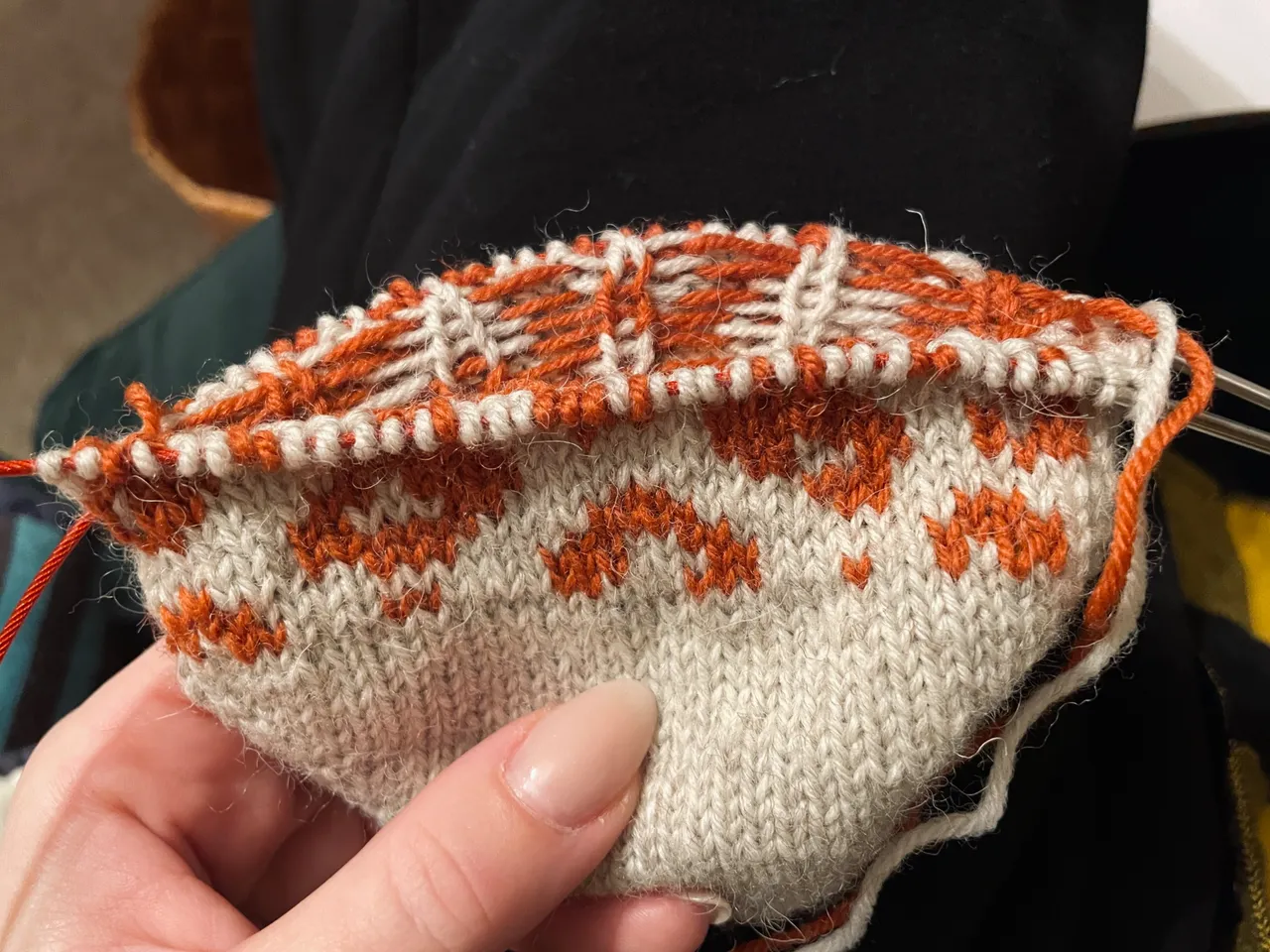
At first it was quite hard to understand what to do and I had to watch a couple youtube videos and just see what happens. Having those extra stitches that make up the ’ladders’ on the backside was first really confusing cause it can mess up you finding where you are in the colour pattern. My ladders are between every 6 stitches and I soon figured out which colour to do the ladder with. On this pattern (migh not work on something else) I chose to do the ladder (a purl stitch with both yarns held in the front) with the opposite colour of what the next stitch in the pattern calls for. It worked really nicely because the yarns held in front basically serves you the colour you need and looks very neat even when you strech the knit.
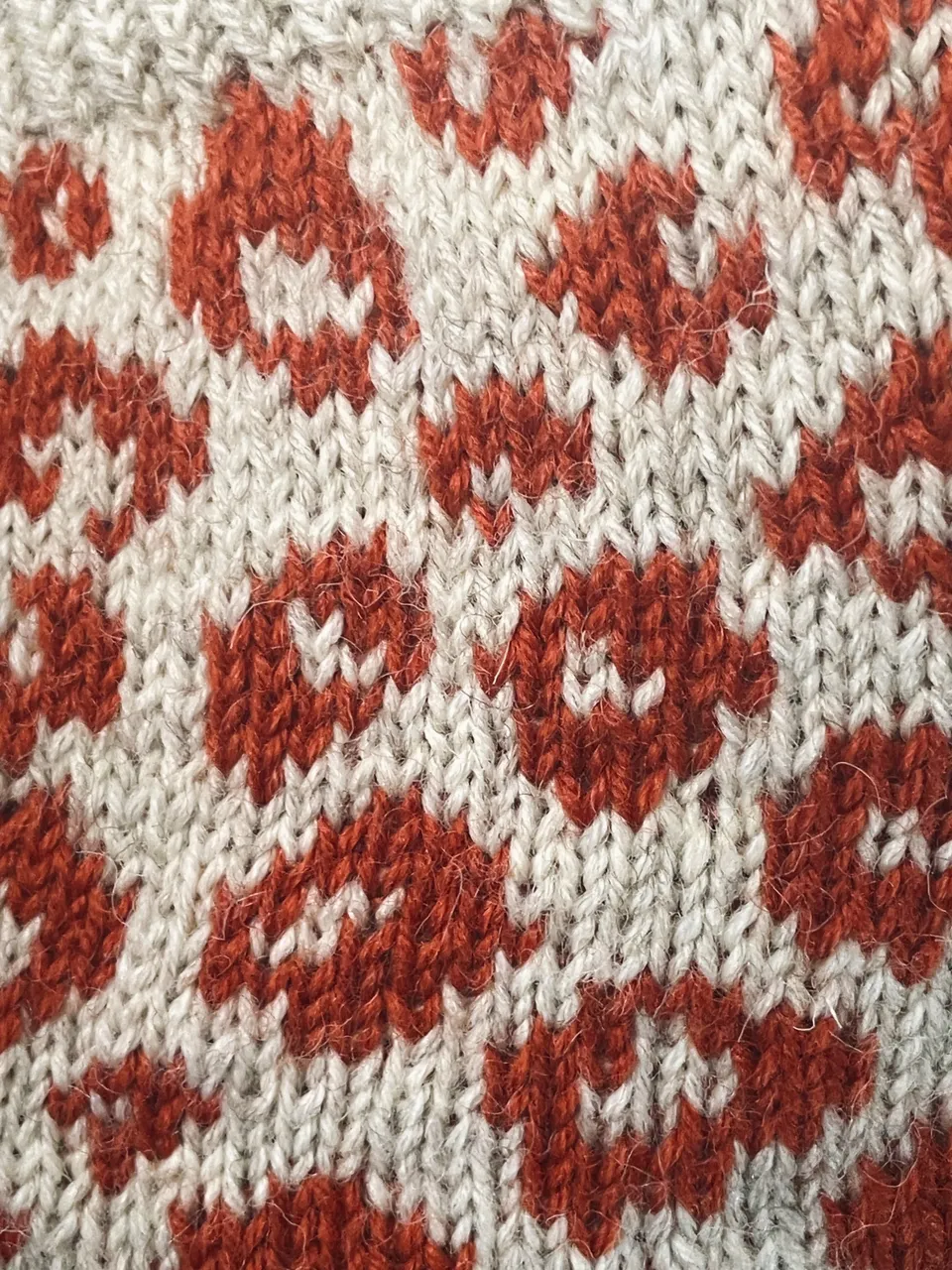
Can you spot where my ladders are? This knit hasn’t been blocked yet and with my tendency to knit very tightly, there is no way in hell a pattern like this would look this neat right off the bat with the normal method. I’m obsessed. Of course this is a bit slower and it’s definitely not required for every colour pattern and different type of knit, but it’s an amazing tool to have in your knowledge kit.
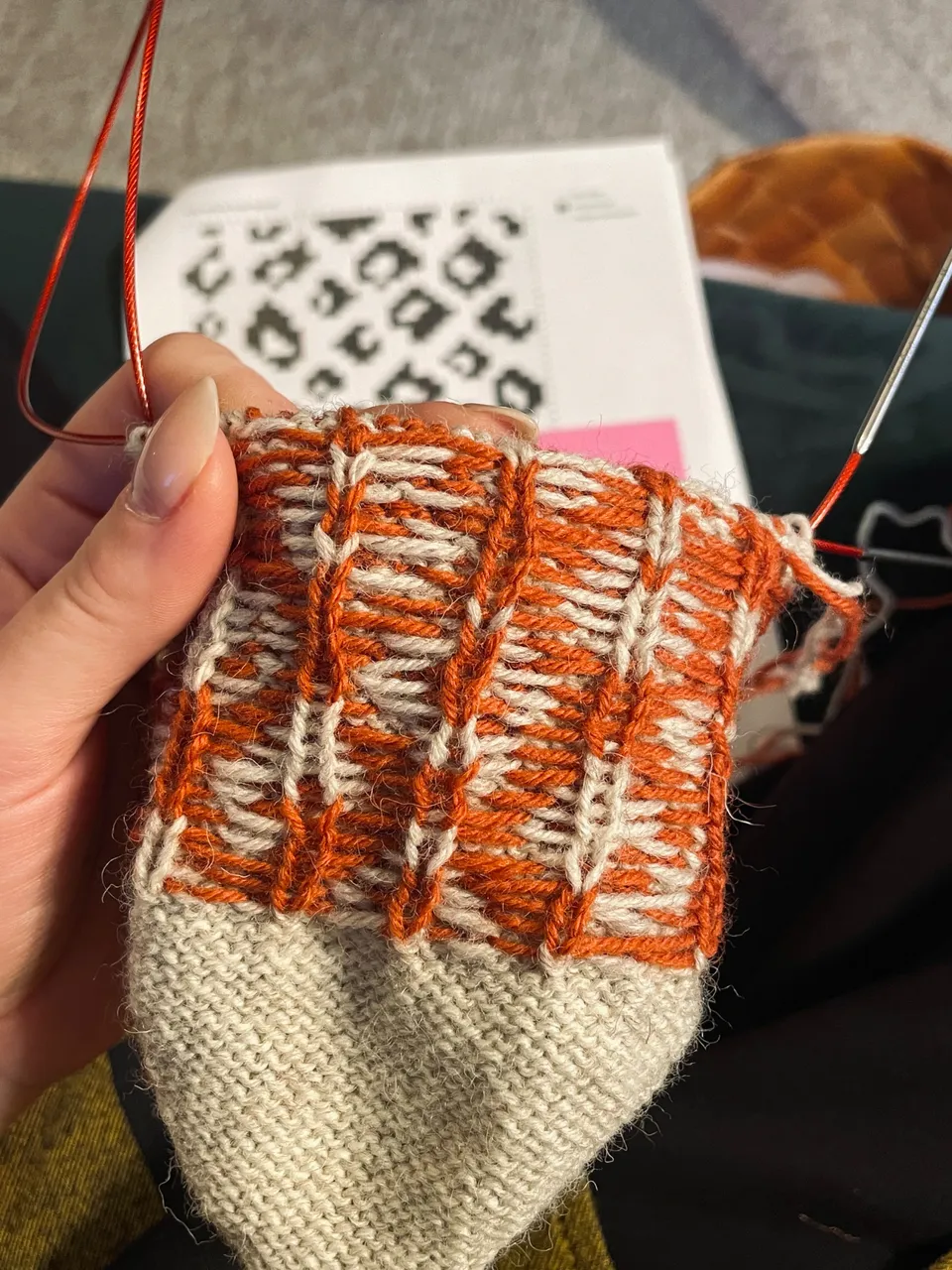
It’s not like it matters what the knit looks like on the inside but… it does look real nice!
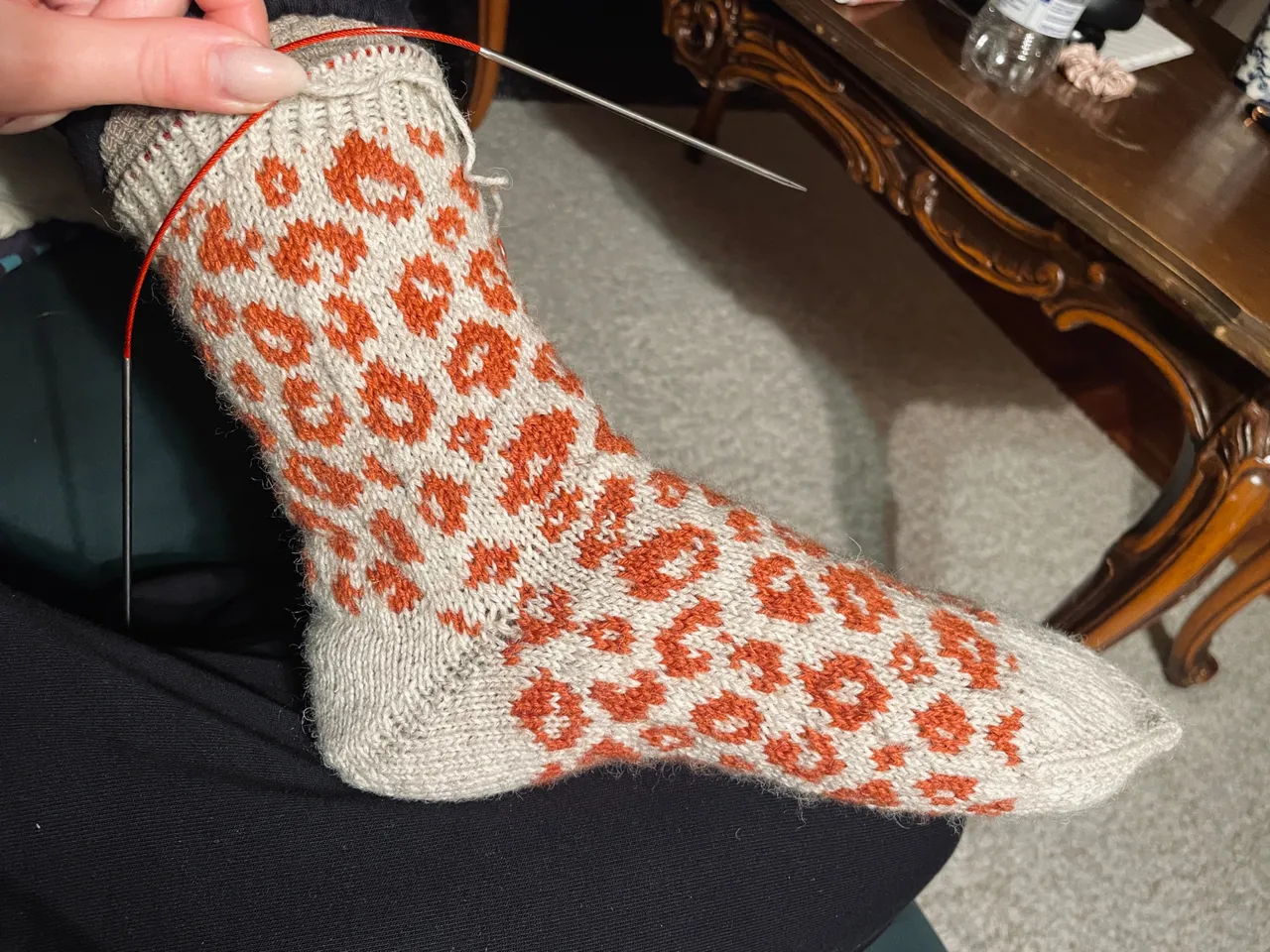
Once I got the hang of the ladder technique, I soon came to the heel and had to learn how to do a German short row heel. I had come across a few patterns where you use the German short rows in the back of the neck for a sweater so I was somewhat familiar but the heel thing was completely new to me. I just followed the instructions thinking there is no way this is gonna make a heel but here we go. I hope I did it right, I’m not certain but it does look quite alright. What I noticed about this heel method was that it does make the sock tighter on the arch than what you can easily adjust for with the flap and gusset I’m used to. There socks are going as a Christmas gift for someone with a wider foot than mine so I can only hope they fit. I’m trying them on here over another sock and the knit will relax when I wash it but we’ll see.
